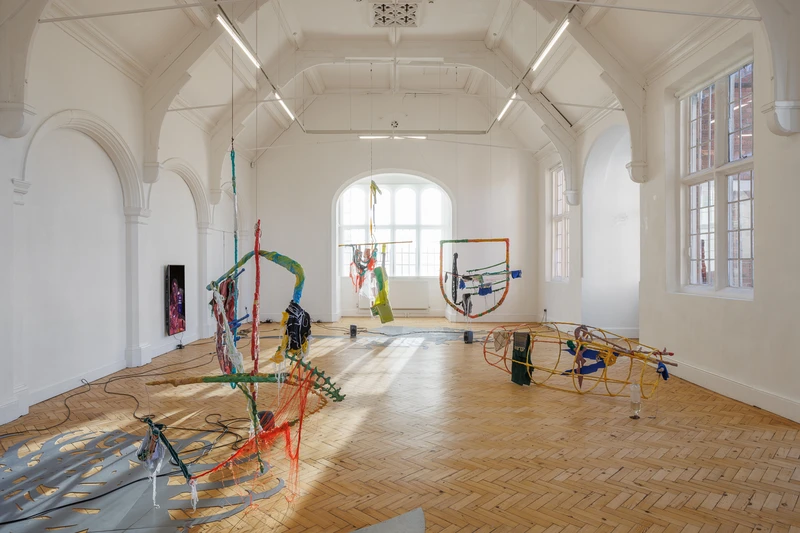Julien Creuzet – ‘Too blue, too deep, too dark we sank…’
14 Jan-13 Mar 2022


The second recipient of Camden Art Centre’s Emerging Artist Prize at Frieze, French-Caribbean artist Julien Creuzet (b. 1986 France) multi-disciplinary practice interweaves poetic, sensory and social forms. Born in a Parisian banlieue, Creuzet grew up in Martinique and now lives and works in Paris. He places his own lived experience at the heart of his practice whilst allowing the work to shine a light on collective social realities of the Caribbean diaspora, focusing on the troubled intersection between Caribbean histories and the events of European modernity. Creuzet describes his ancestral home, Martinique, as “the heart of my imagination” and the visual and aural languages that collide in his installations migrate and transform through a process of creolisation, entering into a dialogue with the question of emancipation, a spirit of black affirmation and the feeling of the Caribbean diaspora as it exists now.
For this, his first exhibition in a UK institution, Creuzet has filled the gallery with a dense installation incorporating music, video, poetry and sculpture. Creuzet’s distinctive sculptural language often repurposes found materials; relics of detritus washed ashore by oceans or the unrelenting progress of history. This installation includes a series of new sculptures informed by the insignia on the flags of Caribbean countries which have gained independence after centuries of colonial rule. Creuzet invites visitors to navigate an environment filled with words and symbols, colours and textures, drawn from the heritage of different cultures – allowing relationships between disparate elements to be drawn out through the imagination.
A new film presented as part of the exhibition depicts a figure rendered in smartphones, cigarettes and other elements – alluding to the ways the African diaspora is connected and networked digitally as well as through literature, music and art. The character dances in the traditional Bèlè style that has evolved in Martinique through periods of colonisation, resistance and emancipation, combining rhythmic music and movement as a form of emotional expression. The work exists in deliberate dialogue with the gallery space as well as the social and political context of London, in particular the cultural heritage of the Caribbean diaspora and its continuing influence on British culture, which generates some of its most powerful art and music: from Calypso, Ska and Reggae to Drill and contemporary urban music.
Bringing his work into a specific relationship with the contemporary music scene, Creuzet has collaborated with London-based singer-songwriter anaiis to compose and record the soundscape that plays in the gallery. Drawing from her French-Senegalese heritage and experiences living in the USA and Ireland, anaiis’ work is shaped by ideas of liberation, empowerment and the reclamation of freedom. Creuzet’s exhibition extends into the Reading Room across an archipelago of floor-based sculptures. These apparently abstract assemblages combine shapes traced from diagrams, illustrations and etchings relating to Caribbean history, culture and geography – bringing disparate fragments and perceptions of place into dialogue.